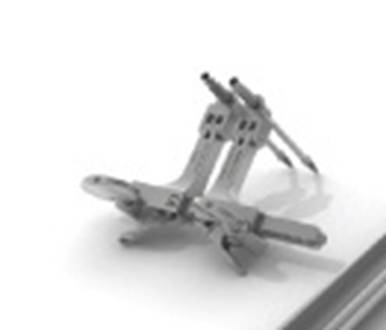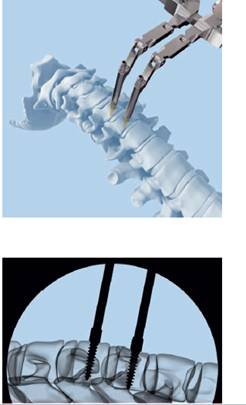Artificial Disc Replacement - Distraction

Distraction is the term spine surgeons used to describe the separation of the vertebrae to place devices between them. This occurs in artificial disc replacement and fusion surgeries, and even with surgeries where the disc remains in tact. An example of a distraction tool (called a retainer) is to the right. Makers of implants usually also make their own retainers.
Screws are placed in the vertebrae above and below the affected disc and the two vertebrae are then separated with fine controls to make room for the device, an artificial disc or fusion cage, and to further help in the completion of the discectomy. This also helps in resecting prolapsed discs and osteophytes. The image to the right shows a graphic of the process as the distractor is applied. One advantage of an ADR device that uses the keel design is that the distraction needs to be no more than the intended disc height. Those with "teeth" have to be distracted even more, leading to more cases of distraction pain after surgery. However, distraction pain can even occur with distraction levels equal to normal disc height because of adaptation by the patient's muscles, tendons, and ligaments to the maladapted position of the patients spine. If the patient should experience this pain, it is treated with medication until it dissipates.
The image to the right shows a graphic of the process as the distractor is applied. One advantage of an ADR device that uses the keel design is that the distraction needs to be no more than the intended disc height. Those with "teeth" have to be distracted even more, leading to more cases of distraction pain after surgery. However, distraction pain can even occur with distraction levels equal to normal disc height because of adaptation by the patient's muscles, tendons, and ligaments to the maladapted position of the patients spine. If the patient should experience this pain, it is treated with medication until it dissipates.
Next we see a fluoroscope depiction of distraction.
Retainers/distraction is not needed in all cases. It is left to the judgment of the surgeon, whether or not to use them.
